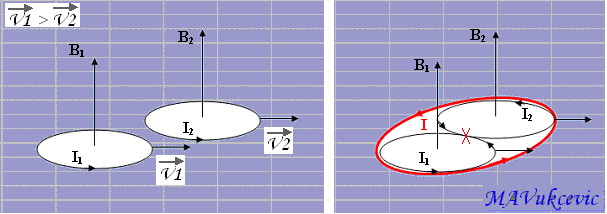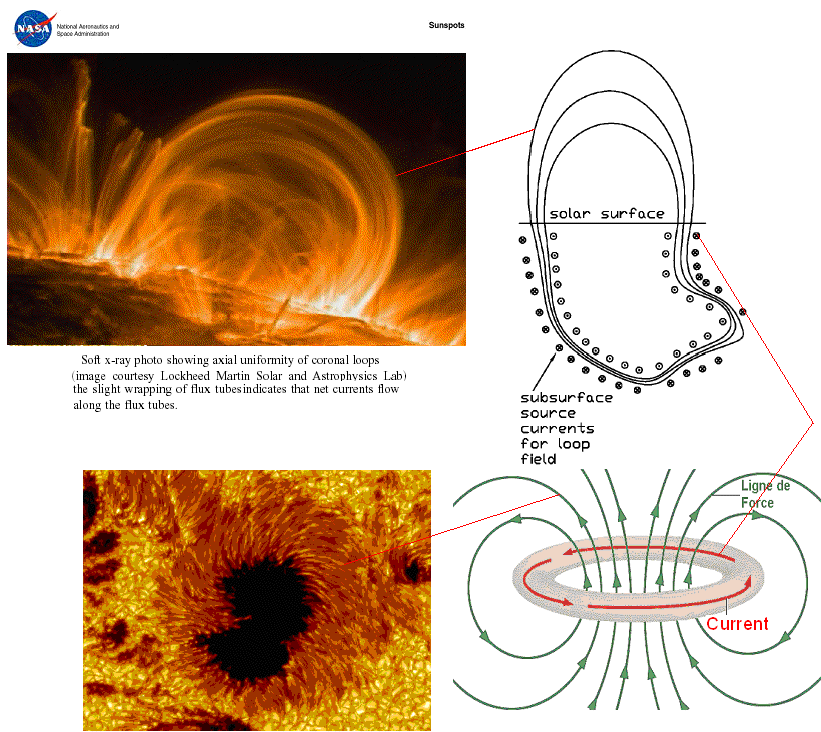
SUNSPOT GENERATION
Kenneth H. Schatten in his 'percolation dynamo' hypothesis considering enlargement of localised solar magnetic areas, makes following assumption:" Like sign attract, and unlike fields repel, essentially the opposite behaviour of magnetic fields in a vacuum, or subadiabatic atmosphere."
However, he fails to show how this actually might happen, referring to the Parker's model, but even that is far too ambiguous process. In addition, Schatten's dynamo argument is circular, with the system feeding on itself for energy, and therefore quite implausible. Alternatively, if one takes an 'electric current' model of the solar surface, than I believe solution is very simple. Here I have applied it to the process of the sunspot generation. Let's consider two cells of the same magnetic polarity moving with slightly different velocities V1 and V2 due to differential rotation (V1 > V2 ), with magnetic fields produced by cells circular currents.

Resultant current along the common border drops to zero (if currents are equal) or near zero. As a result of the above two existing current loops reform into a single new current loop (shown in red) forcing two like fields to join and create a new larger one. If the cells' areas overlap flux will increase, hence flux amplification process. Few days later differential rotation will stretch the area; the previously enlarged region will eventually break up into smaller ones, with number of much reduced current loops, finally leading to disintegrating of sunspots and plages. Magnetic cells often come close together due to drift of small magnetic areas known as the 'magnetic carpet'; see this link: http://umbra.nascom.nasa.gov/ssu/view1.jpg .Sometime later, two catch-up with each other and the cells borders join.
